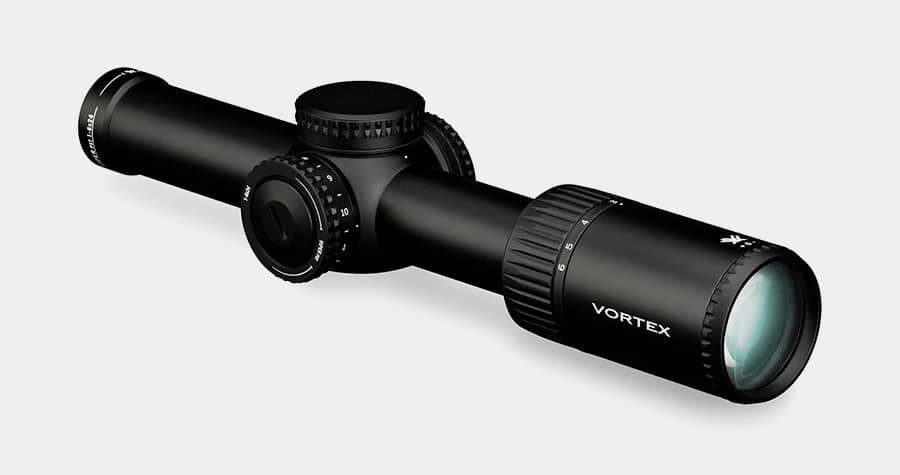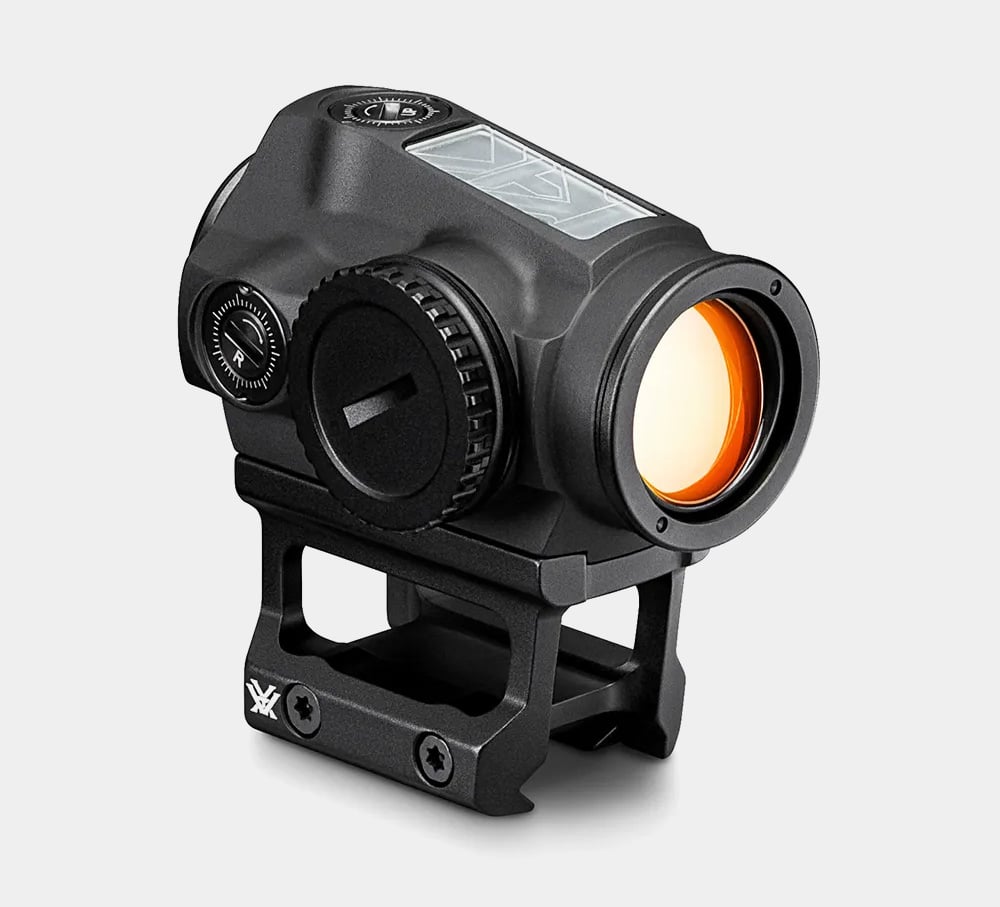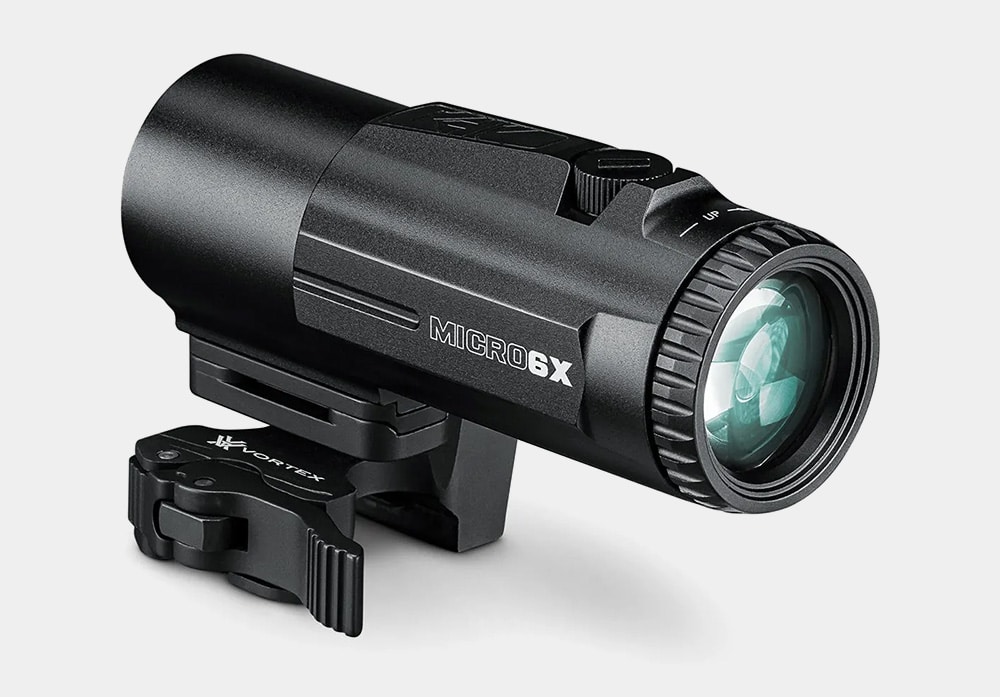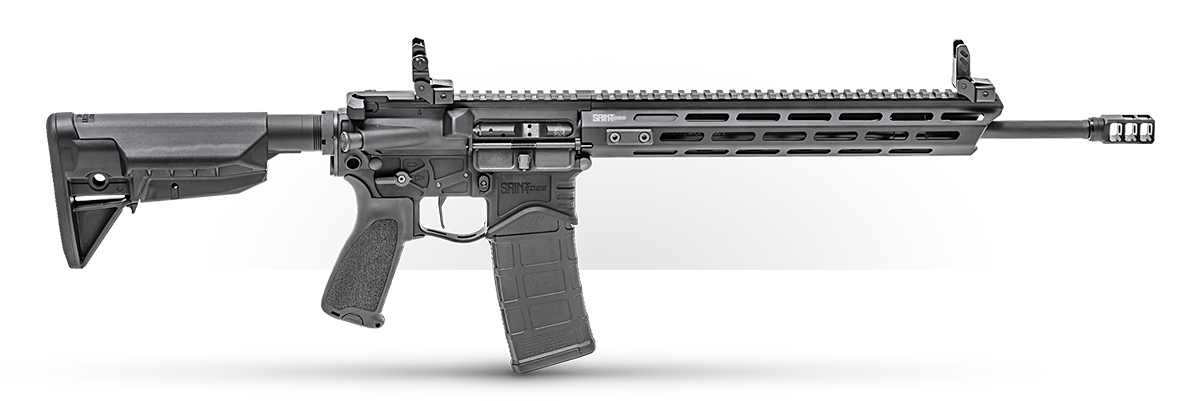How does someone choose between a low power variable optic (LPVO) or a red dot with a magnifier? There are tons of options, and they both have positives or negatives to them. However, either optic choice with a skilled shooter behind them can excel at hitting their intended target.
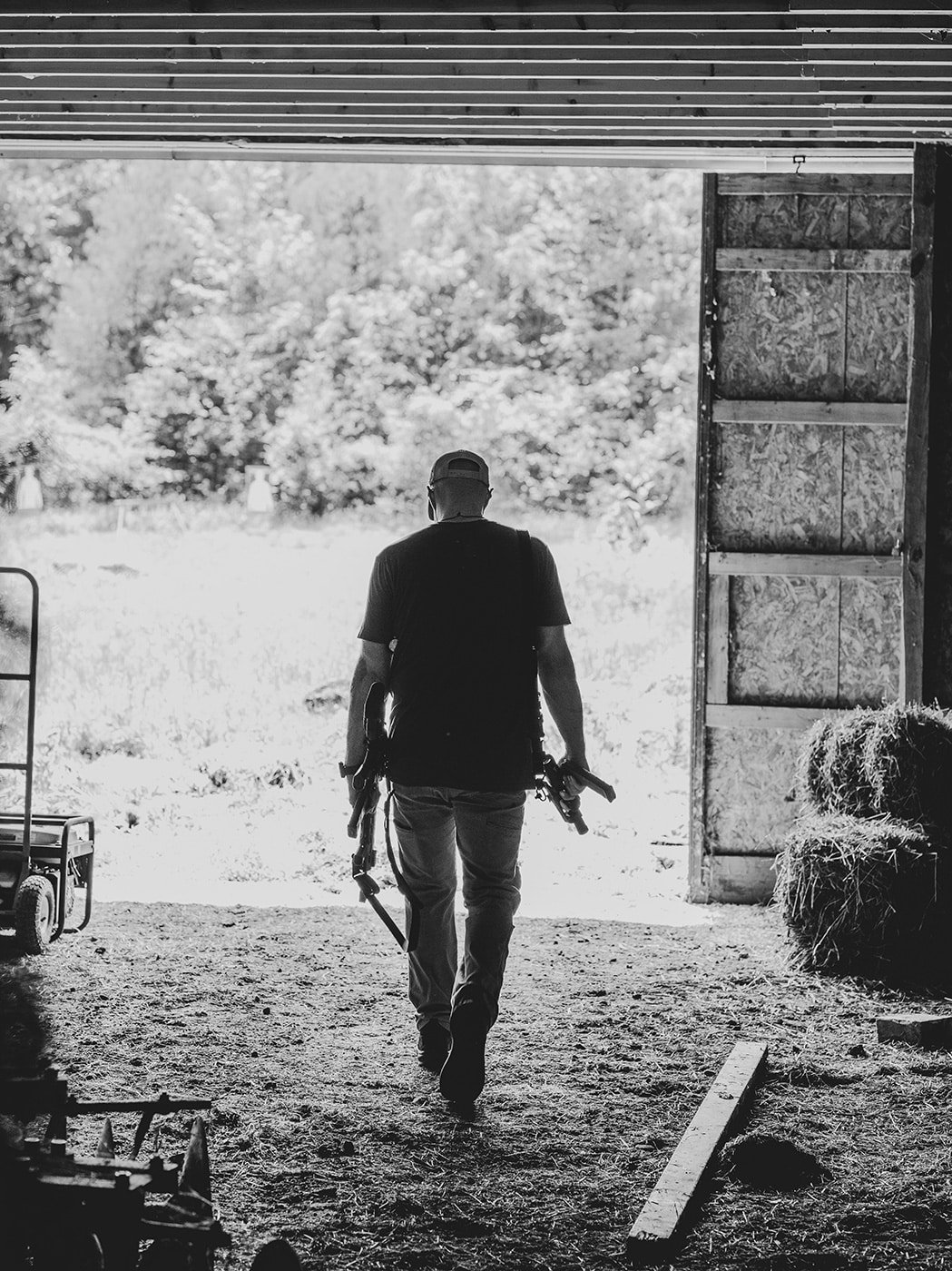
For comparison’s sake, we decided to compare the Vortex Viper PST Gen 2 1-6X vs. the Vortex Sparc Solar with the 6X Magnifier to see how they compared.
Red Dot and Magnifier
Red dots have ruled CQB (close quarters battle) for a long time and likely will continue to do so. Add a magnifier and now the red dot has gained the capabilities of a magnified optic, making a farther shot much easier.
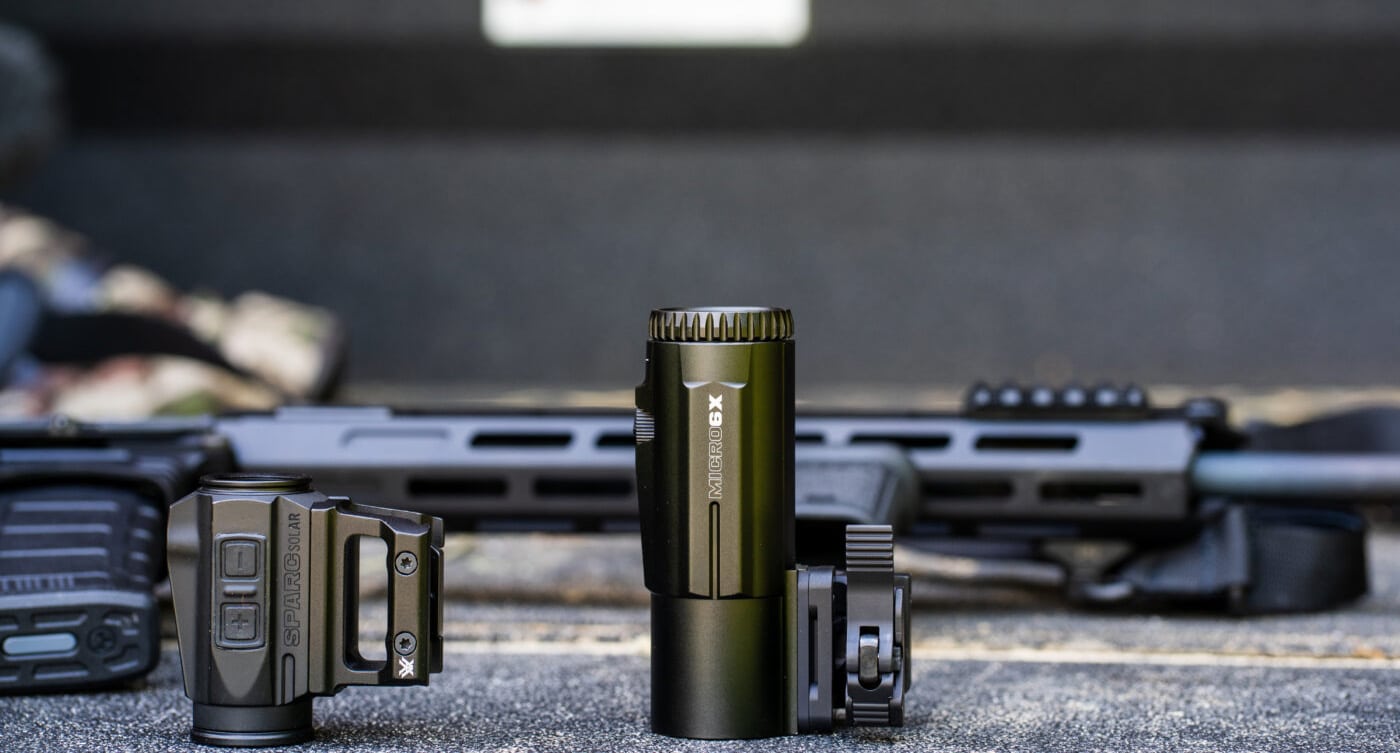
Most magnifiers for a red dot are a single tube with possibly a quick-detach, flip-to-the-side mount that allows the magnifier to be flipped out of line to leave the shooter with a clear 1X standard red dot for those closer engagements. For longer shots, flip the magnifier back. It’s a very easy-to-use process.
What Is an LPVO?
The name of this gives it away — it is going to be a low power variable optic. These are often found with zoom ranges such as 1-4X, 1-6X, 1-8X and 1-10X. Most of the newest ones on the market have a 30mm tube and illuminated reticles. They are also usually found with a fast-focus eyepiece with excellent light transmission.
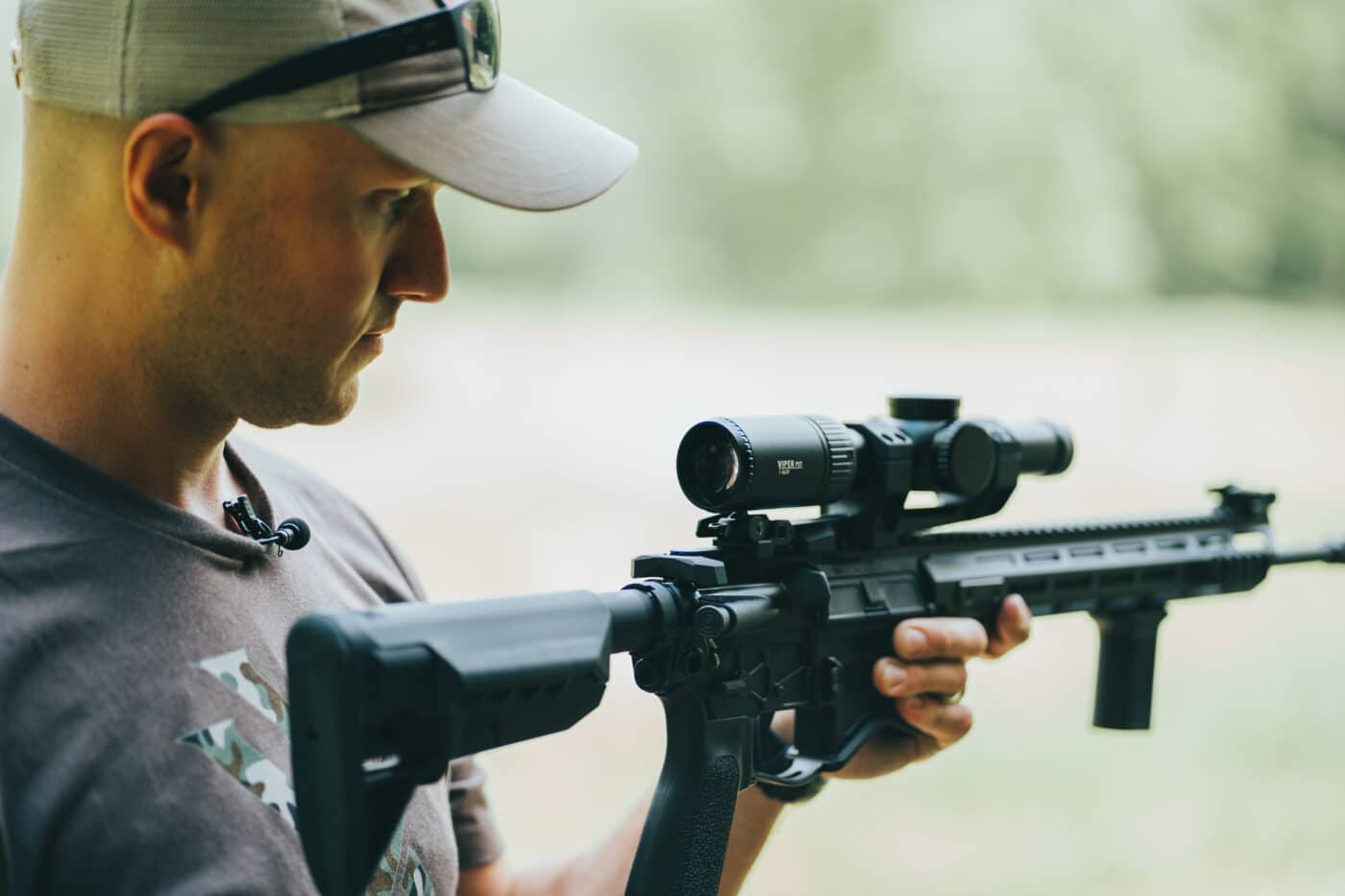
While an LPVO can often be on the heavier side compared to a red dot with a magnifier set-up, that’s a trade-off to get the benefit of adjustable magnification. On 1X power, an LPVO has the ability to be shot like a red dot, but then you can dial it up to 4X,6X or even in some cases 8X or 10X, and shots at 600 yards-plus can be done with ease (depending on your rifle or cartridge being used).
The Main Differences
What is the intended purpose? If it’s going on a gun for CQB most of the time, then a red dot and magnifier is more ideal. The LPVO will outshine any red dot and magnifier combo if it’s for a DMR (Designated marksman rifle) role and the needs of longer engagements outweigh closer range use. Yet, the LPVO can be dialed down to 1X to shoot close and fast.
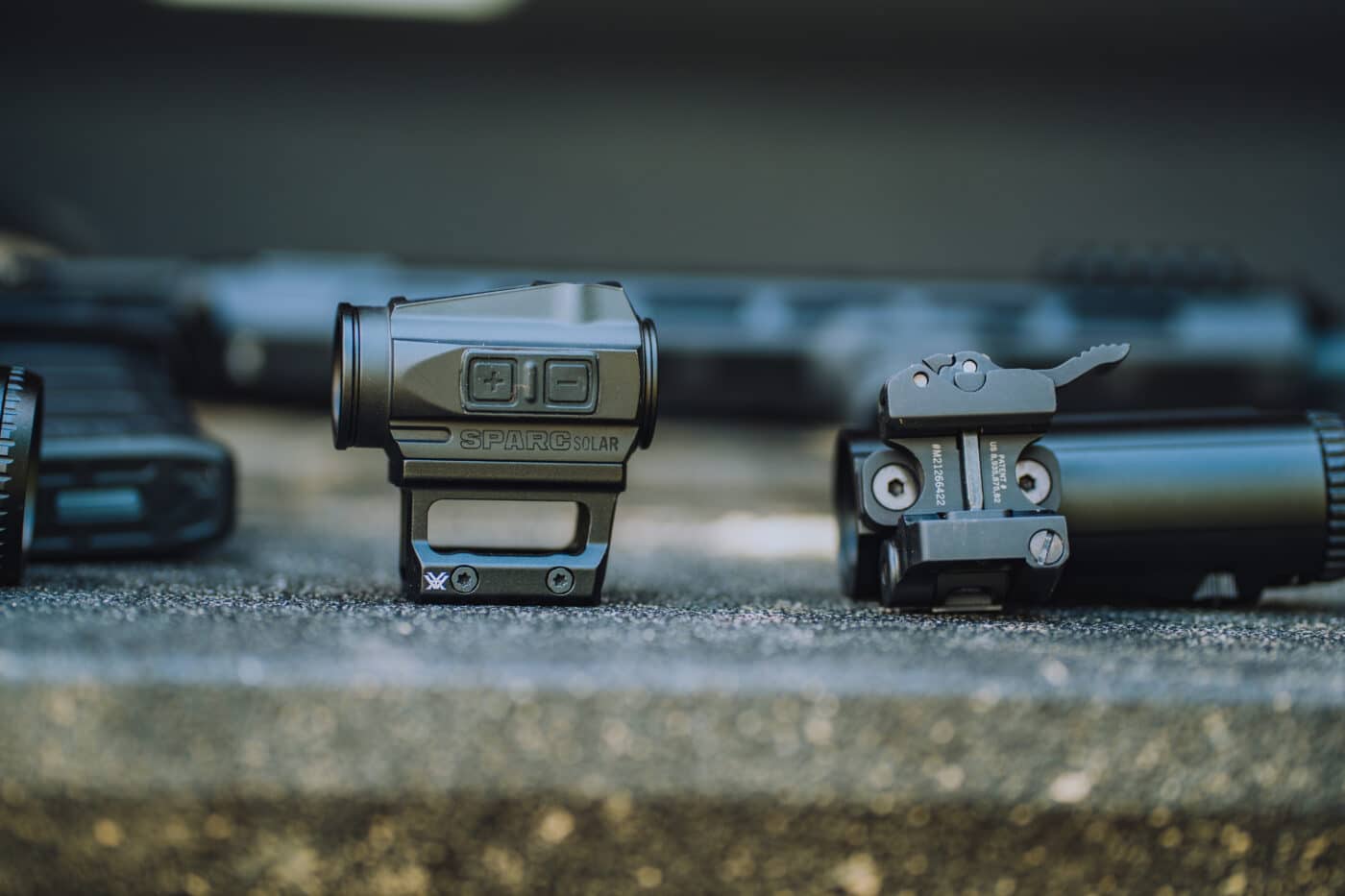
The overwhelming majority of 3-Gun shooters use an LPVO, yet in a SWAT team, most of the members will be fielding a red dot or a holographic type sight. Why? The likelihood is that with 3-Gun the shooter can start at 1X power and then dial it up for a 6″ plate at 100 to 300 yards.
A point man or breacher on a SWAT team doesn’t have that luxury; they need to be able to shoot fast and maintain situational awareness. There isn’t time to switch back and forth on the power wheel of an LPVO.
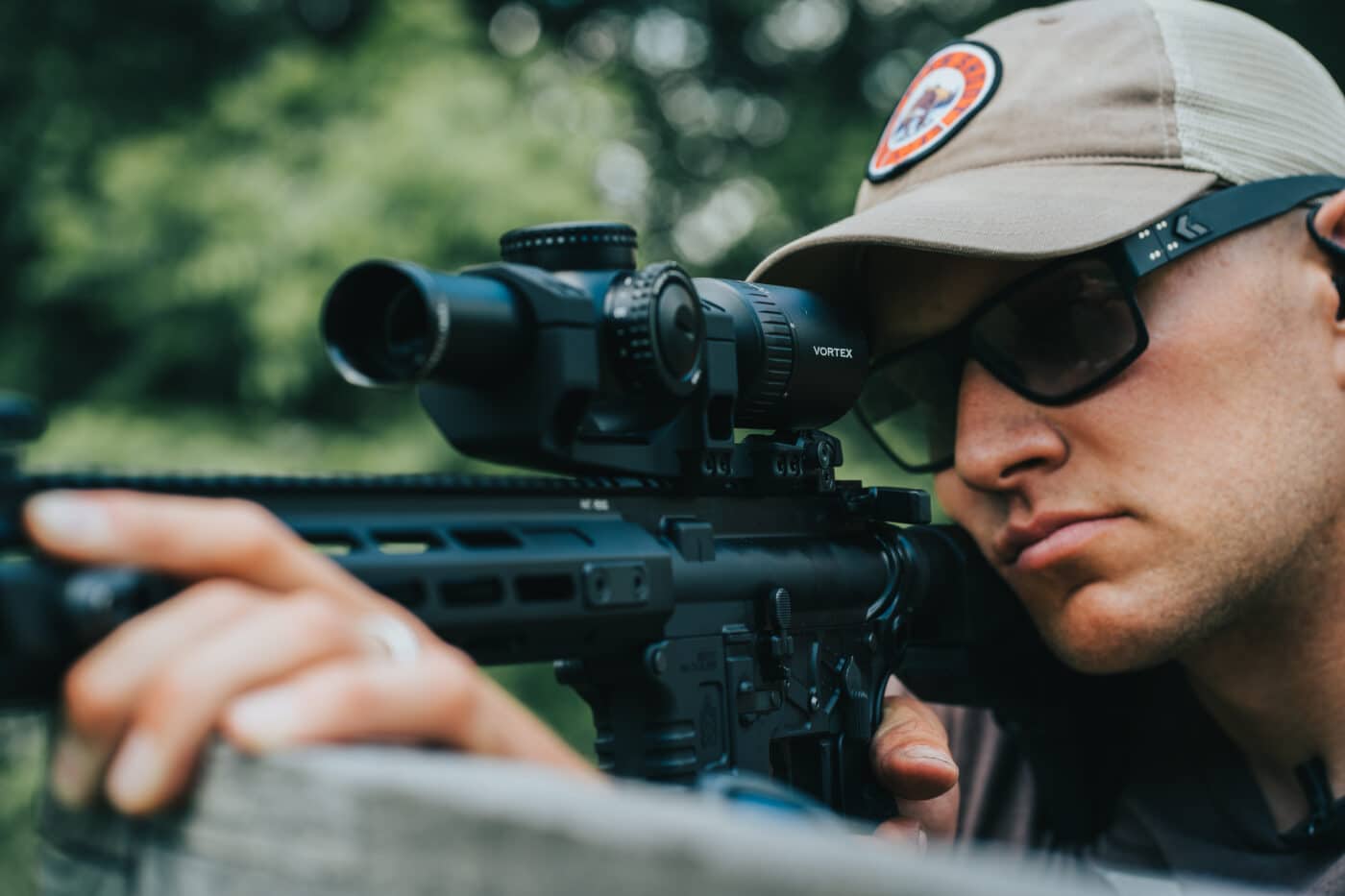
However, the sniper on a SWAT team may have an LPVO for that precise shot, since it seems most prefer the LPVO over a red dot and magnifier combo. This is likely due to the ability to change the power wheel depending on the need at the time.
Relative Drawbacks
Eye relief and eye box with the magnifier for a red dot are, well, not entirely ideal. This is arguably the worst drawback with a magnifier for a red dot. Regardless of brand, I have used a lot of them, and they all have this eye relief issue when you compare it against an LPVO. For a precision shot at distance, the LPVO will outclass the magnified red dot every time.
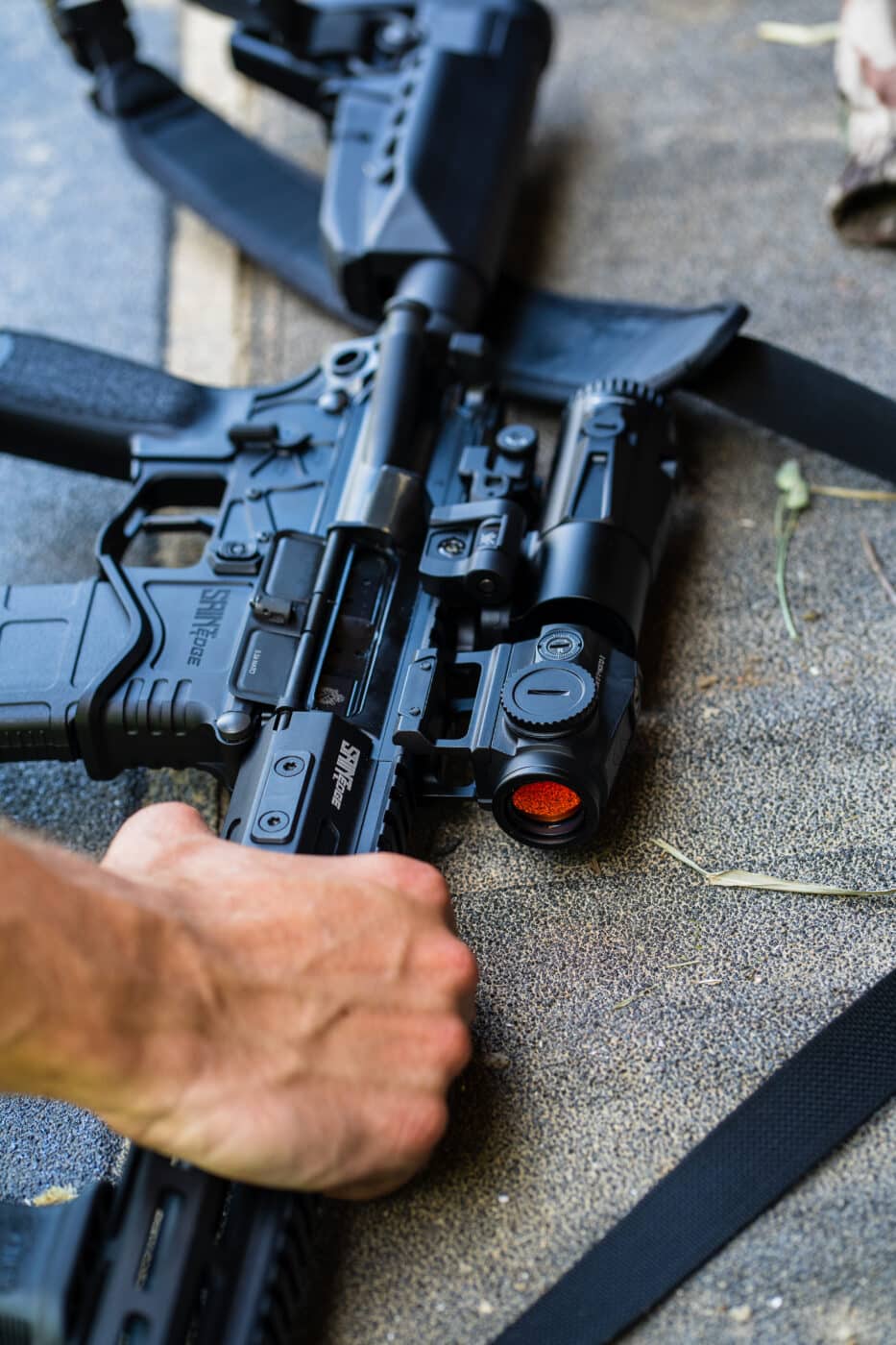
With that being said, a red dot will always be faster than any LPVO on 1X power if it’s CQB or close range targets which need to be shot fast while maintaining situational awareness and having both eyes open while shooting. Of course, someone can shoot both eyes open with a scoped optic, but with a red dot it’s much easier. Most red dots or holographic weapon sights are parallax free. This means regardless of where the red dot is in the optic window, the bullet will still impact where the dot is transposed upon.
With any rifle scope, it’s imperative the reticle is centered in the objective lens. If you don’t center the reticle in a variable power optic, it can make your shot off by a few inches at short distance, or several feet when you shoot longer range.
The Right Choice?
The truth is, there isn’t a wrong choice on this. Just one of these two optics maybe a better option depending on what their intended role is. I reiterate, if you are using the optic for CQB with the rare occasion of needing magnification at longer range or even positive target identification, a red dot with magnifier might be a better choice.
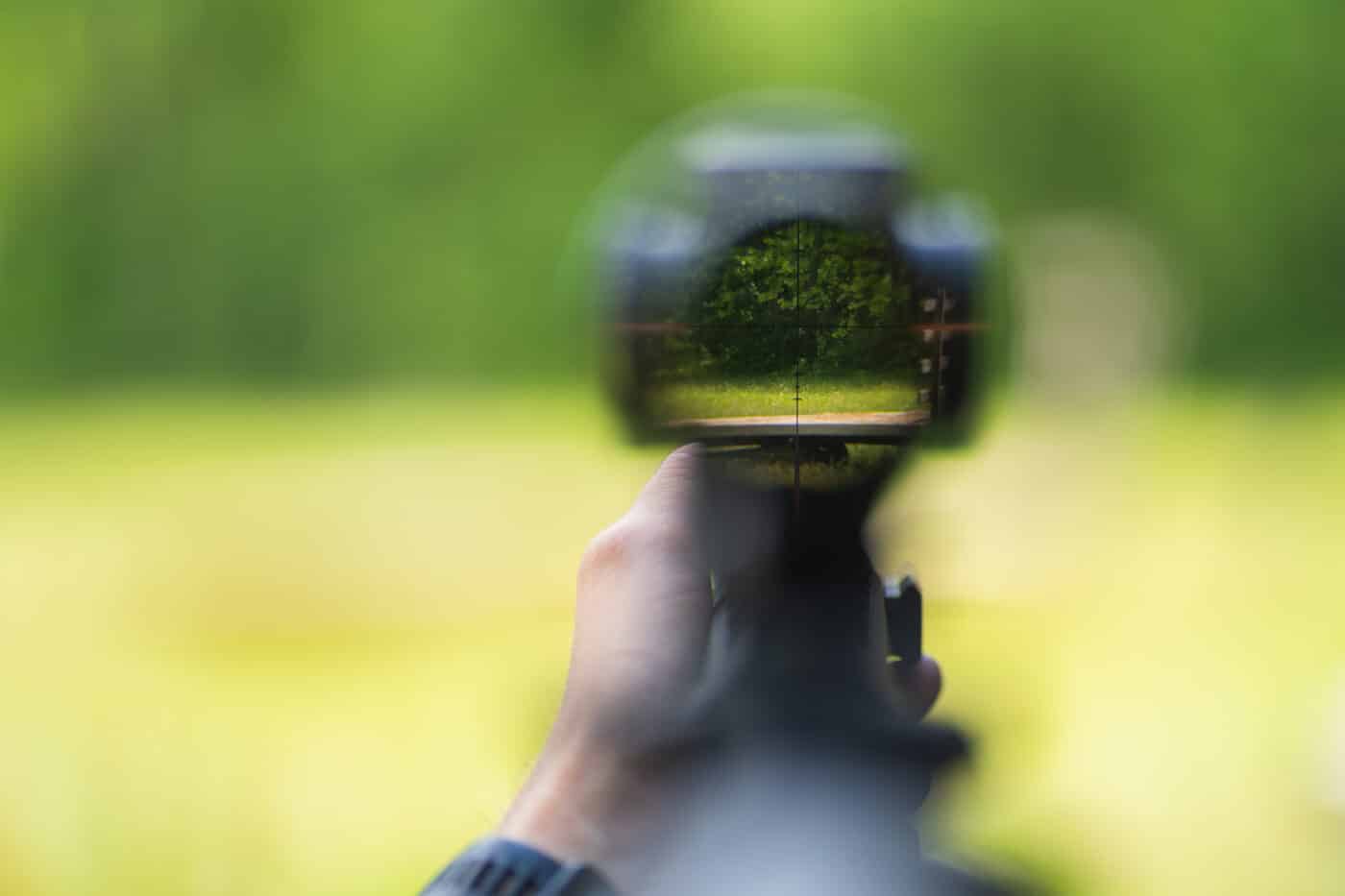
If you need an optic to make precise shots at farther distances or your likelihood for a longer shot is greater, the LPVO might be better. Regardless of which might be the better option, neither will be the right choice if you don’t train with your weapon system and know how to employ your optic properly.
Editor’s Note: Please be sure to check out The Armory Life Forum, where you can comment about our daily articles, as well as just talk guns and gear. Click the “Go To Forum Thread” link below to jump in and discuss this article and much more!
Join the Discussion
Featured in this video
Continue Reading
Did you enjoy this video?

 157
157




